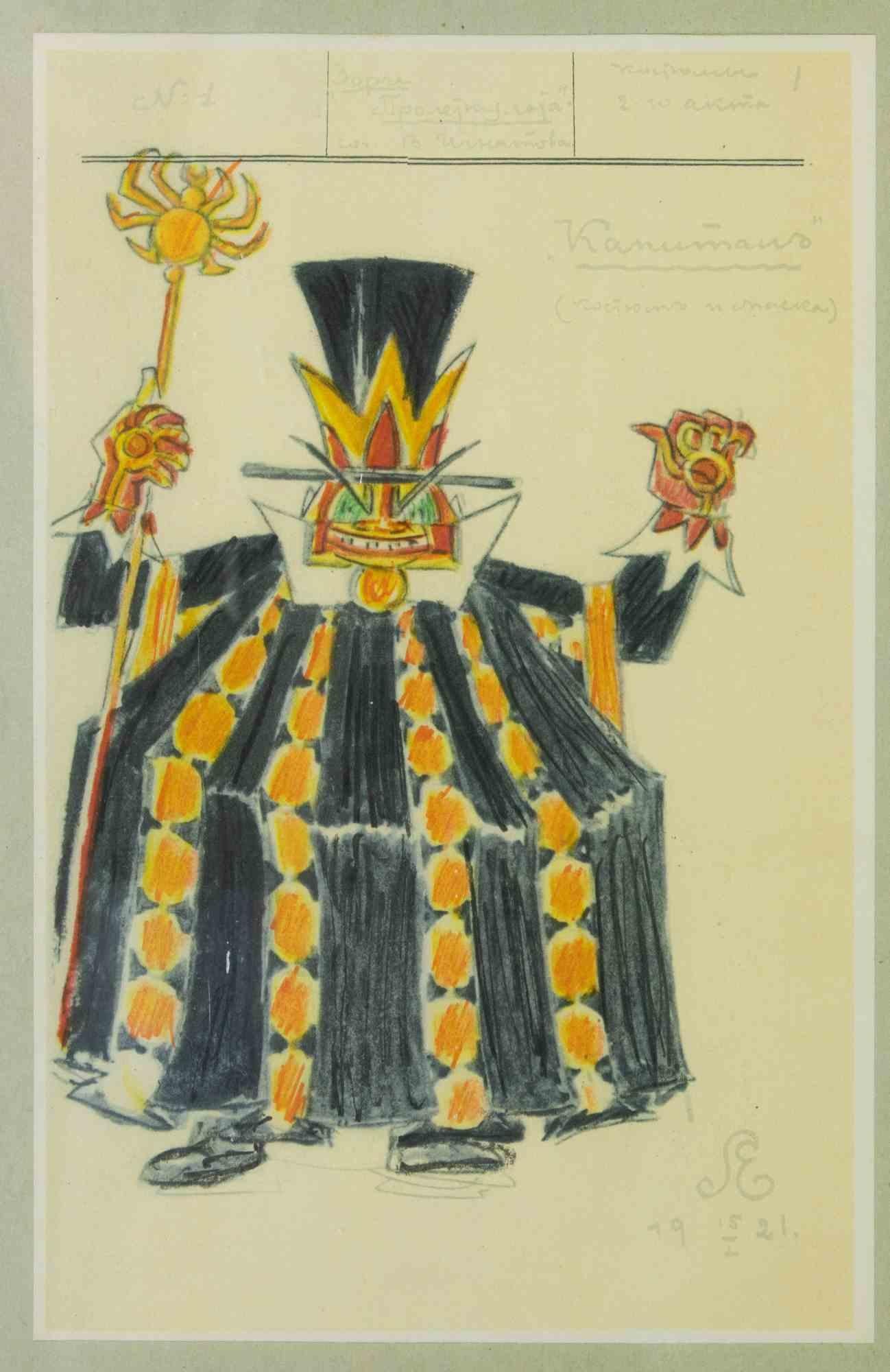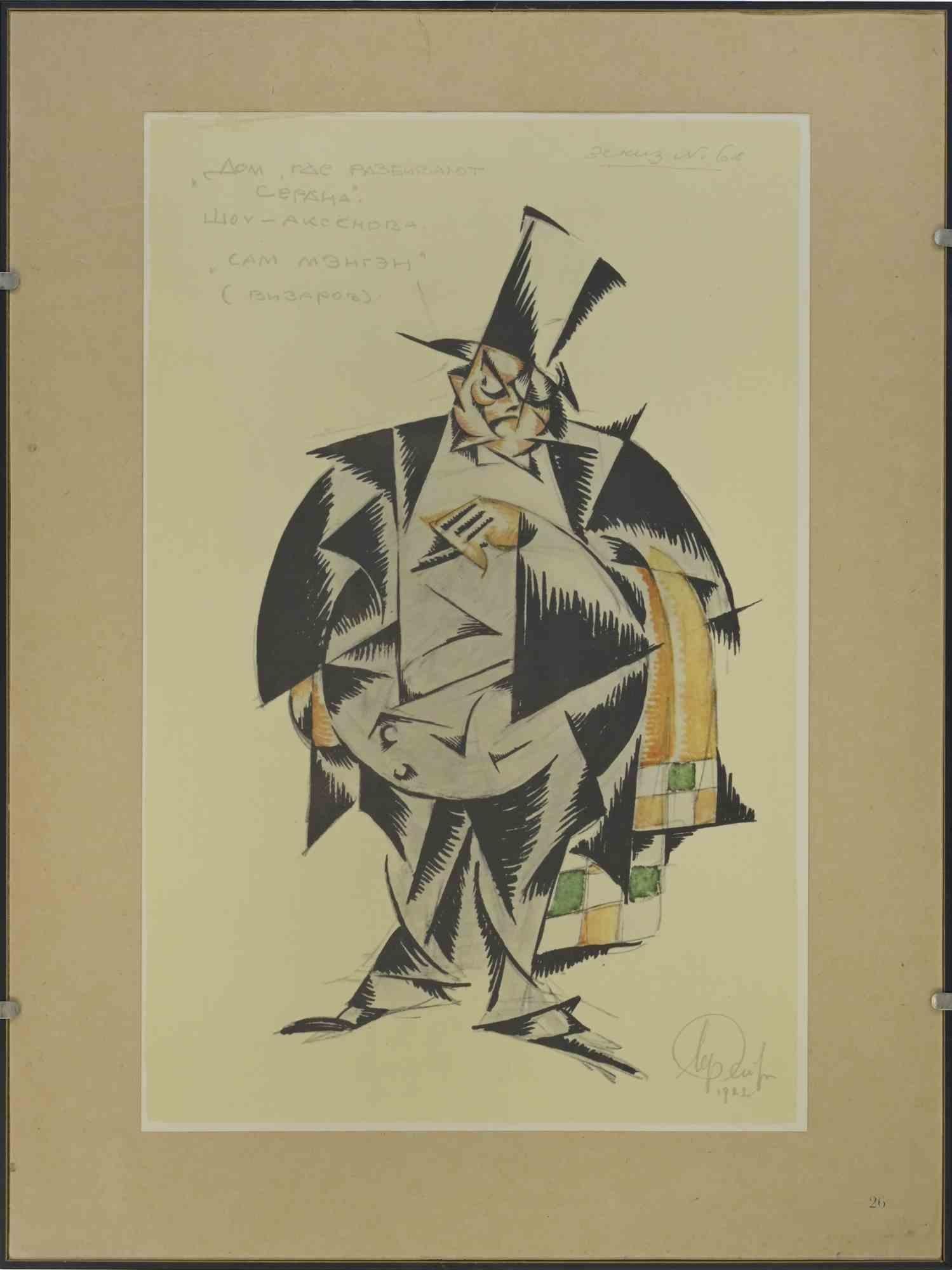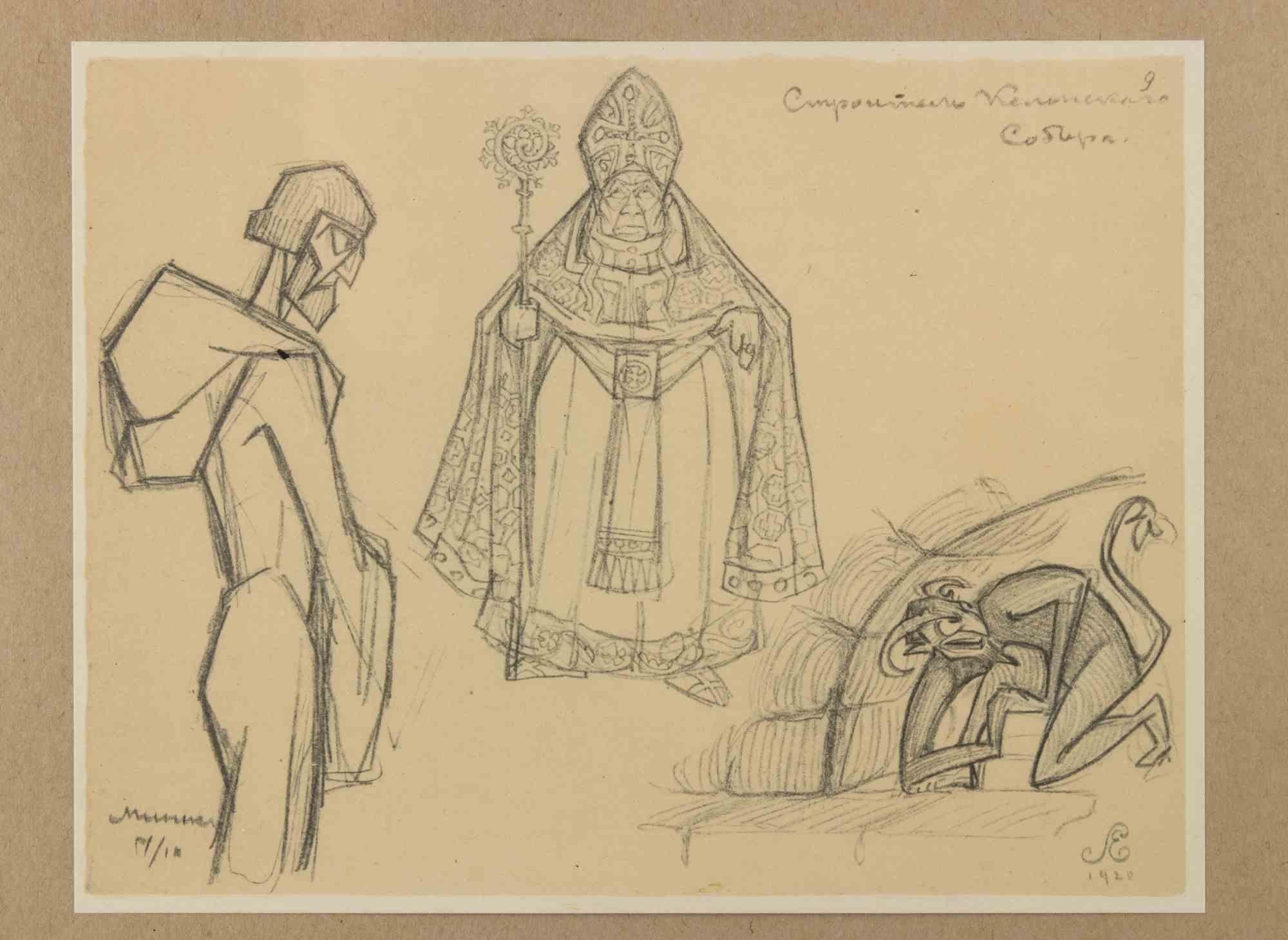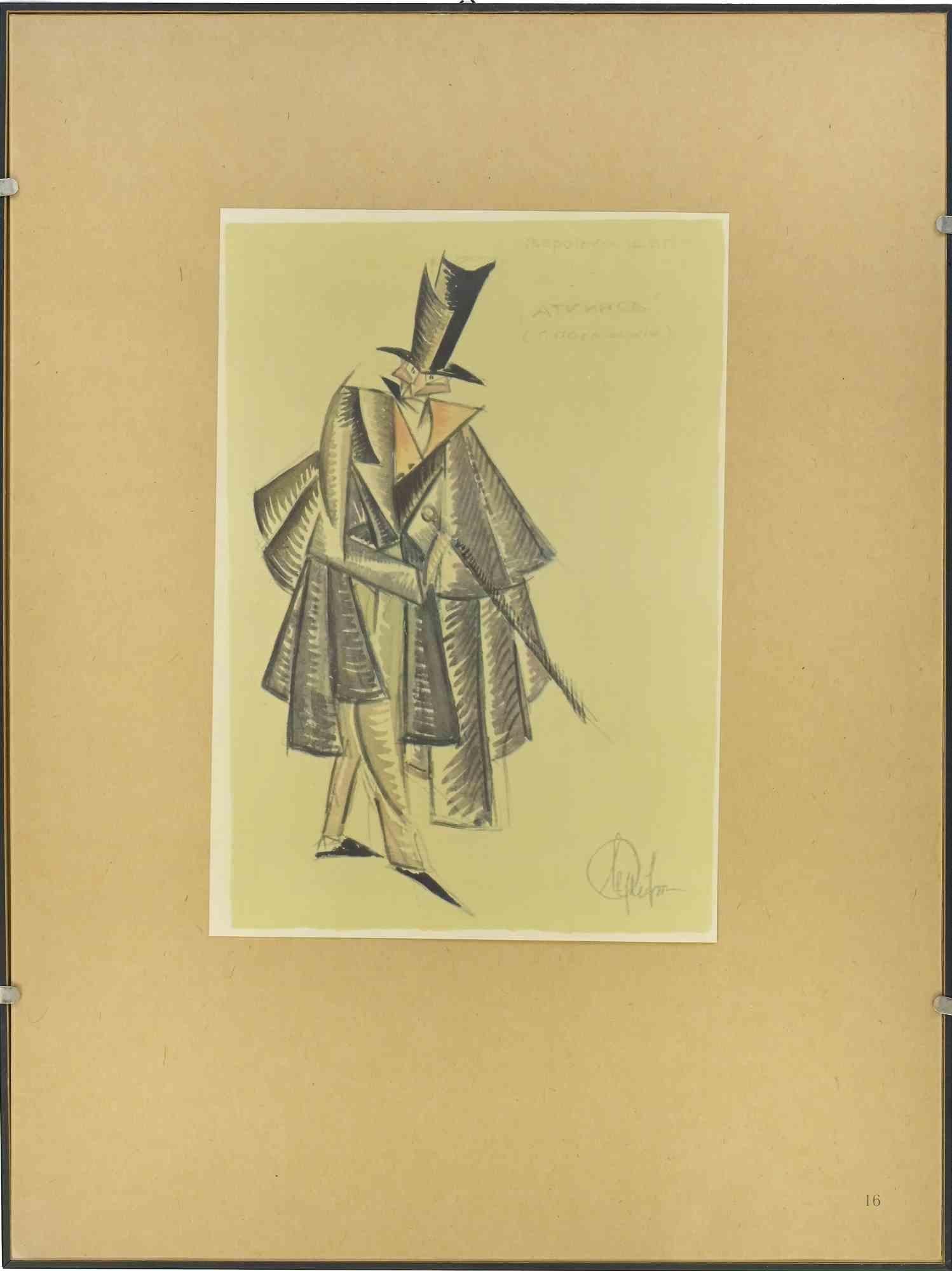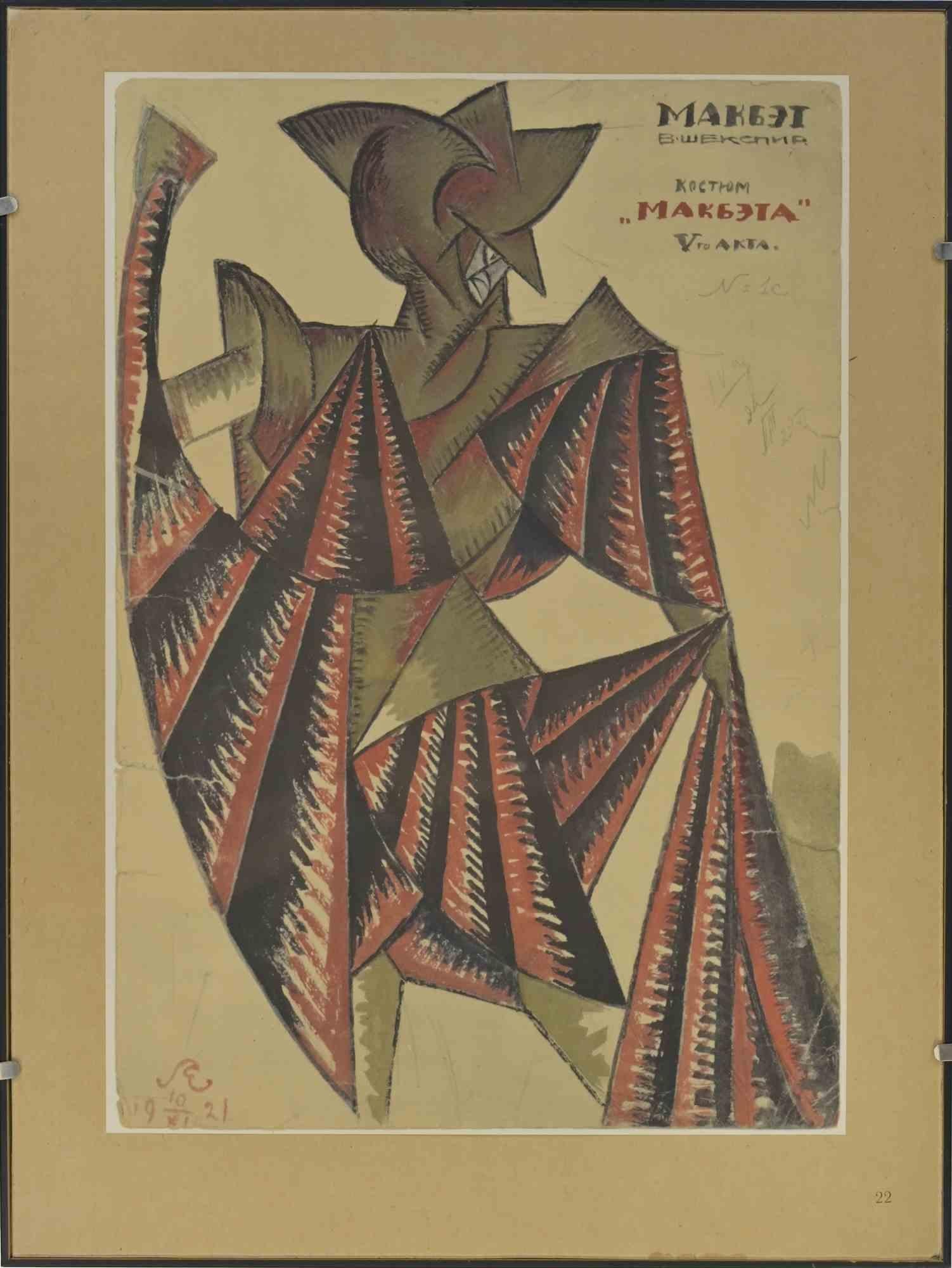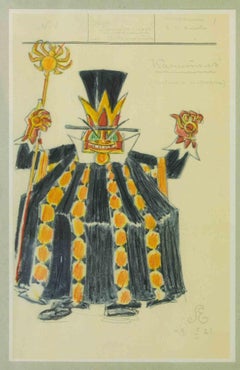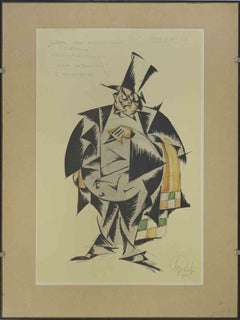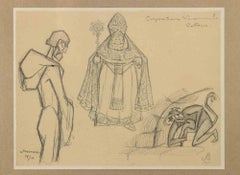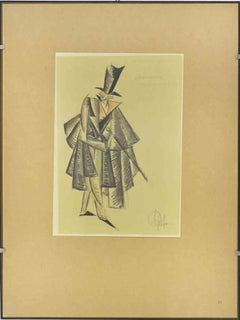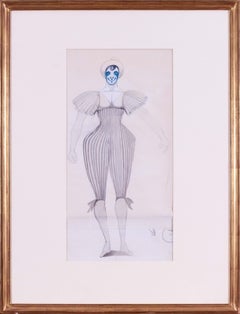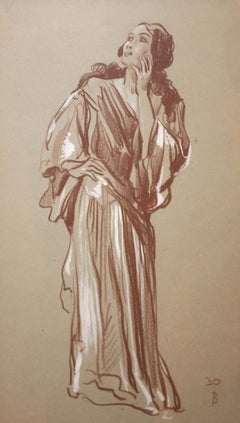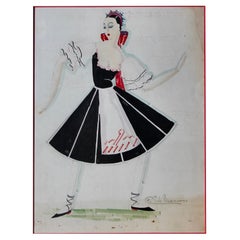Items Similar to Sketch for a Theatrical Costume - Phototype after Sergei Eisenstein - 1921
Want more images or videos?
Request additional images or videos from the seller
1 of 4
Sketch for a Theatrical Costume - Phototype after Sergei Eisenstein - 19211921
1921
$356.60
£267.39
€300
CA$497.59
A$538.74
CHF 286.42
MX$6,497.61
NOK 3,601.95
SEK 3,358.05
DKK 2,285.43
About the Item
Sketch for a theatrical Costume is a modern artwork realized after Sergei Eisenstein in 1921.
Mixed colored phototype print.
Includes frame: 44.5 x 33.5 cm
Fair conditions due to the time
Known worldwide for his contribute to the birth of cinema, as well as for his cinematic masterpieces, Eisenstein was active in theater too. In this field , between 1920 and 1923, he produced more than 300 theatrical sketches
- Creation Year:1921
- Dimensions:Height: 10.24 in (26 cm)Width: 7.09 in (18 cm)Depth: 0.04 in (1 mm)
- Medium:
- Movement & Style:
- After:Sergei Eisenstein
- Period:
- Condition:Insurance may be requested by customers as additional service, contact us for more information.
- Gallery Location:Roma, IT
- Reference Number:Seller: T-1499781stDibs: LU650314835462
About the Seller
4.9
Platinum Seller
Premium sellers with a 4.7+ rating and 24-hour response times
1stDibs seller since 2017
7,839 sales on 1stDibs
Typical response time: 1 hour
- ShippingRetrieving quote...Shipping from: Grasse, France
- Return Policy
More From This Seller
View AllSketch for a Theatrical Costume - Phototype after Sergei Eisenstein - 1921
Located in Roma, IT
Sketch for a theatrical Costume is a modern artwork realized after Sergei Eisenstein in the mid-20th Century.
Mixed colored phototype print.
Includes frame: 44 x 33 cm
Fair condit...
Category
1920s Contemporary Figurative Prints
Materials
Photogravure
Sketch for a Theatrical Costume - Phototype after Sergei Eisenstein - 1922
Located in Roma, IT
Sketch for a theatrical Costume is a modern artwork realized after Sergei Eisenstein in the mid-20th Century.
Mixed colored phototype print.
Includes frame: 45 x 34 cm
Fair condit...
Category
Mid-20th Century Contemporary Figurative Prints
Materials
Digital
Sketch for a Theatrical Costume - Phototype after Sergei Eisenstein - 1921
Located in Roma, IT
Sketch for a theatrical Costume is a modern artwork realized after Sergei Eisenstein in the mid-20th century.
Mixed colored phototype print.
Includes frame: 44 x 33 cm
Fair condit...
Category
1920s Contemporary Figurative Prints
Materials
Photogravure
Sketch for a theatrical Costume after Sergei Eisenstein - Mid-20th Century
Located in Roma, IT
Sketch for a theatrical Costume is a modern artwork realized after Sergei Eisenstein in the mid-20th Century.
Mixed colored phototype print.
Includes frame: 45 x 34 cm
Fair condit...
Category
Mid-20th Century Contemporary Animal Prints
Materials
Photogravure
Sketch for Theatre - Phototype after Sergei Eisenstein - Mid-20th century
Located in Roma, IT
Sketch for Theatre is a modern artwork realized after Sergei Eisenstein in the mid-20th century.
Mixed colored phototype print.
Includes frame: 45 x 34 cm
Fair conditions due to ...
Category
Mid-20th Century Contemporary Figurative Prints
Materials
Photogravure
Costume for Macbeth - Phototype after Sergei Eisenstein - 1921
Located in Roma, IT
Costume for Macbeth is a modern artwork realized after Sergei Eisenstein in the mid-20th century.
Mixed colored phototype print.
Includes frame: 45 x 34 cm
Fair conditions due to...
Category
Mid-20th Century Contemporary Figurative Prints
Materials
Photogravure
You May Also Like
Costume sketch for ballet "Don Quixote" , * 1931, paper, mixed media, 21x15.5 cm
Located in Riga, LV
Romans Suta
Born on April 28, 1896 in the vicinity of Cesis (Latvia), died on July 14, 1944 in Tbilisi (Georgia), rehabilitated posthumously.
Painter, graphic artist, decorative and stage designer, art critic and theoretician. Studied at the J. Madernieks' Art Studio (1913), Riga City Art School (1913-1915), and Penza Art School (1915 -1917). A prominent figure and active protagonist of modernist trends in Latvian art. Travels to Berlin and Paris, where he made the acquaintance of A. Ozanfant, Le Corbusier, and others. The influences of Cubism and Constructivism.
A member of the Riga Artists' Group (1920-1924) and the Riga Graphic Artists' Society. Painter of still lifes and figural compositions. After the first experiments in Modernism, he turned to a more realistic manner of representation. The initiator and developer of a national constructive style, especially in interior design; the founder of Baltars creative workshop for porcelain painting (1924-1928); a designer and painter at Kuznetsov...
Category
1930s Modern Figurative Drawings and Watercolors
Materials
Paper, Mixed Media
Edward Burra original drawing for a costume design for clown, British, 20th Cent
By Edward Burra
Located in Petworth, West Sussex
Edward Burra CBE (British, 1905 – 1976)
Costume design for clown pencil
watercolour and body colour on paper
19.3/8 x 9.3/4 in. (49.3 x 24.7 cm.)
Provenance: The collection of Gillia...
Category
20th Century Surrealist Figurative Drawings and Watercolors
Materials
Paper, Watercolor, Pencil
Theater Sketch 2
By Alexander Oscar Levy
Located in Buffalo, NY
Alexander O. Levy was a painter, illustrator,
printmaker and designer who was born in 1881 in Bonn, Germany. He
died in 1946 in Buffalo, New York. At age three, he was brought to
...
Category
1930s Art Deco Figurative Drawings and Watercolors
Materials
Archival Paper, Charcoal, Gouache
Frank Poole Bevan "Design for Stage Costume" Yale University School of Drama
Located in Sharon, CT
Frank Poole Bevan (1903-1976) Studied at Yale and a Professor of Theatrical Design, Yale School of Drama from the 1930's through 1971. Offering an annotated and signed original costume design watercolor...
Category
Vintage 1930s American Art Deco Drawings
Materials
Paint
Fool's Paradise Movie Costume Sketch Cecil B. DeMille - Classic Hollywood
Located in Miami, FL
Natacha Rambova imaginatively conceives and sketches a costume for Cecil B. DeMille's 1921 movie Fool's Paradise: Paramount. Rendered in Gouache, watercolor, pencil, and metallic s...
Category
1920s Symbolist Figurative Drawings and Watercolors
Materials
Silver, Bronze
Ballet und Pantomime "Tschaikiun II", plate #17.
By Walter Schnackenberg
Located in Palm Beach, FL
Walter Schnackenberg’s style changed several times during his long and successful career. Having studied in Munich, the artist traveled often to Paris where he fell under the spell of the Henri de Toulouse-Lautrec’s colorful and sensuous posters depicting theatrical and decadent subjects. Schnackenberg became a regular contributor of similar compositions to the German magazines Jugend and Simplicissimus before devoting himself to the design of stage scenery and costumes. In the artist’s theatrical work, his mastery of form, ornamentation, and Orientalism became increasingly evident. He excelled at combining fluid Art Nouveau outlines, with spiky Expressionist passages, and the postures and patterns of the mysterious East.
In his later years, Schnackenberg explored the unconscious, using surreal subject matter and paler colors that plainly portrayed dreams and visions, some imbued with political connotations. His drawings, illustrations, folio prints, and posters are highly sought today for their exceedingly imaginative qualities, enchanting subject matter, and arresting use of color.
SCHNACKENBERG BALLET UND PANTOMIME...
Category
1920s Art Deco Figurative Prints
Materials
Paper
More Ways To Browse
Retro Library Posters
Reynolds Etching
Richard Lane
Robert Conover
Robert Von Neumann
Ruth Gleaning
Salvador Dali Bullfight
Salvador Dali Color Etching
Salvador Dali Flower
Salvador Dali Marilyn
Salvador Dali Snail
Salvador Dali Tarot
Saturday Evening Post Prints
Sheldon C Schoneberg
Shell Etching
Signed Screen Print Patrick Nagel
Snail Dali
Swiss Jazz Festival
